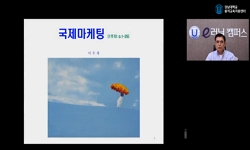Caffeine is an easily incept-able common chemical in present human life. Many researches about the effect of caffeine were performed but it is not yet fully understood on the synaptic transmission. It was known that caffeine targeted the A1 adenosine ...
http://chineseinput.net/에서 pinyin(병음)방식으로 중국어를 변환할 수 있습니다.
변환된 중국어를 복사하여 사용하시면 됩니다.
- 中文 을 입력하시려면 zhongwen을 입력하시고 space를누르시면됩니다.
- 北京 을 입력하시려면 beijing을 입력하시고 space를 누르시면 됩니다.
https://www.riss.kr/link?id=T13429617
- 저자
-
발행사항
용인 : 경희대학교, 2014
-
학위논문사항
학위논문(석사) -- 경희대학교 동서의학대학원 , 의과학과 , 2014. 2
-
발행연도
2014
-
작성언어
영어
-
주제어
caffeine ; hippocampus ; LTP ; STP ; adenosine receptor ; MEA
-
DDC
610 판사항(20)
-
발행국(도시)
경기도
-
형태사항
59p. : 삽도 ; 26cm
-
일반주기명
경희대학교 논문은 저작권에 의해 보호받습니다.
Effect of caffeine on synaptic plasticity in hippocampus using MEA
지도교수:박지호
참고문헌 : p.53-56 - 소장기관
-
0
상세조회 -
0
다운로드
부가정보
다국어 초록 (Multilingual Abstract)

There was a striking difference between the two regions (CA1 and CA2) in the magnitude of effect of caffeine, as well as the ability to interact with a tetanic stimulation to produce LTP. Low concentration of caffeine (0.1mM) treatment produced just an increase of the slope of EPSPs population in CA2 whilst it facilitated LTP in CA1. Moreover, the higher concentration of caffeine (>1mM) treatment was able to convert to short-term potentiation (STP) in CA2.
It seemed to be a postsynaptic effect and the positional difference might reflect its differential response with caffeine.
Caffeine is an easily incept-able common chemical in present human life. Many researches about the effect of caffeine were performed but it is not yet fully understood on the synaptic transmission. It was known that caffeine targeted the A1 adenosine receptors (A1Rs) as LTP inducing antagonist by increasing cAMP level in CA1 of hippocampus. However, the effect is not yet clear on the other area of hippocampus. For these reasons, it was tried to test the effect of caffeine on memory circuit in whole hippocampal area during LTP.
There was a striking difference between the two regions (CA1 and CA2) in the magnitude of effect of caffeine, as well as the ability to interact with a tetanic stimulation to produce LTP. Low concentration of caffeine (0.1mM) treatment produced just an increase of the slope of EPSPs population in CA2 whilst it facilitated LTP in CA1. Moreover, the higher concentration of caffeine (>1mM) treatment was able to convert to short-term potentiation (STP) in CA2.
It seemed to be a postsynaptic effect and the positional difference might reflect its differential response with caffeine.
카페인의 독특한 시냅스의 영향을 hippocampus 전 영역에서 동시에 측정하여 시냅스의 대표적인 현상인 LTP에 어떠한 영향을 미치는지 알아보고 short-
59
term potentiation(STP)에 작용점을 연구함으로 시냅스 전달에 카페인이 미치는 영향에 대한 새로운 전기생리학적 접근을 하고자 한다. 이런 이유로 hippocampus 전체 영역에서 LTP상태에 카페인의 전반적인 효과를 설명하고자 하였고 더불어, 카페인의 STP 효과가 LTP에 영향을 미치는지 조사하였다. 상대적으로 카페인 저농도인 0.1 mM 과 고농도 1mM 처리는 hippocampus 의 영역에서 각각 다른 반응을 보였다. 카페인의 저 농도에서는, 영역별 STP와 LTP반응의 차이를 보였는데 CA1영역은 LTP의 postsynaptic 영역으로 알려져 있다. 반면, CA2의 STP 반응은 adenosine receptors가 풍부하다는 보고를 바탕으로 설명된다.
카페인의 고농도 처리는 STP와 LTP 각각 다르게 반응하였다. 특히, DG영역에서 큰 STP와 LTP반응을 보였다. 더불어, CA1의 경우 보다 더 가변적인 특징을 관찰할 수 있었다. 이런 DG는 non-associative LTP에 대한 presynaptic 영역으로 알려져 있다. DG의 가변적 STP 반응은 adenosine receptors의 풍부한 분포와도 관계 되어있다. DG에서 카페인의 반응에 대한 보고가 불명확함에도 불구하고, 농도에 따른 다양한 변화는 시냅스 변화측면에서 시사하는 바가 크다.
또한 selective adenosine receptor antagonist인 DPCPX처리는 고농도 카페인 처리의 반응과 유사한 반응을 보였다. 그럼에도 불구하고, 카페인 adenosine receptor의 non-selective antagonist이고 저농도 처리는 selective antagonist로 다른 결과를 나타났다. Receptor의 sensitivity는 반응에 영향을 미칠 수 있는 적절한 농도를 위해 좀더 연구 수행이 필요하다. 이와 더불어 카페인에 의한 hippocampus 영역별 다양한 변화에 대해 기억과 학습에 기능적 의미를 찾는 다양한 연구가 필요할 것으로 사료된다.
카페인은 일상적으로 이용되는 보편적인 약물이다. 카페인에 대해 많은 연구가 수행되고 있지만 시냅스와 관련된 연구는 미진한 상태이다. 시냅스에서 카페인의 효과는 주로 A₁ adenosine rece...
카페인은 일상적으로 이용되는 보편적인 약물이다. 카페인에 대해 많은 연구가 수행되고 있지만 시냅스와 관련된 연구는 미진한 상태이다. 시냅스에서 카페인의 효과는 주로 A₁ adenosine receptors (A₁Rs)가 작용하고 cAMP 를 증가시켜 CA1에서의 Long-term potentiation (LTP) 유도를 증가시키는 것으로 알려져 있다. 하지만 hippocampus 다른 영역인 CA2 나 CA3 에서의 생리적 기능에 대해서는 정확하게 밝혀내지 못하고 있다.
카페인의 독특한 시냅스의 영향을 hippocampus 전 영역에서 동시에 측정하여 시냅스의 대표적인 현상인 LTP에 어떠한 영향을 미치는지 알아보고 short-
59
term potentiation(STP)에 작용점을 연구함으로 시냅스 전달에 카페인이 미치는 영향에 대한 새로운 전기생리학적 접근을 하고자 한다. 이런 이유로 hippocampus 전체 영역에서 LTP상태에 카페인의 전반적인 효과를 설명하고자 하였고 더불어, 카페인의 STP 효과가 LTP에 영향을 미치는지 조사하였다. 상대적으로 카페인 저농도인 0.1 mM 과 고농도 1mM 처리는 hippocampus 의 영역에서 각각 다른 반응을 보였다. 카페인의 저 농도에서는, 영역별 STP와 LTP반응의 차이를 보였는데 CA1영역은 LTP의 postsynaptic 영역으로 알려져 있다. 반면, CA2의 STP 반응은 adenosine receptors가 풍부하다는 보고를 바탕으로 설명된다.
카페인의 고농도 처리는 STP와 LTP 각각 다르게 반응하였다. 특히, DG영역에서 큰 STP와 LTP반응을 보였다. 더불어, CA1의 경우 보다 더 가변적인 특징을 관찰할 수 있었다. 이런 DG는 non-associative LTP에 대한 presynaptic 영역으로 알려져 있다. DG의 가변적 STP 반응은 adenosine receptors의 풍부한 분포와도 관계 되어있다. DG에서 카페인의 반응에 대한 보고가 불명확함에도 불구하고, 농도에 따른 다양한 변화는 시냅스 변화측면에서 시사하는 바가 크다.
또한 selective adenosine receptor antagonist인 DPCPX처리는 고농도 카페인 처리의 반응과 유사한 반응을 보였다. 그럼에도 불구하고, 카페인 adenosine receptor의 non-selective antagonist이고 저농도 처리는 selective antagonist로 다른 결과를 나타났다. Receptor의 sensitivity는 반응에 영향을 미칠 수 있는 적절한 농도를 위해 좀더 연구 수행이 필요하다. 이와 더불어 카페인에 의한 hippocampus 영역별 다양한 변화에 대해 기억과 학습에 기능적 의미를 찾는 다양한 연구가 필요할 것으로 사료된다.
목차 (Table of Contents)
- Ⅰ. Introduction 1
- Ⅱ. Materials and Methods 6
- 1. Organotypic hippocampal slice culture 6
- 2. Preparation of hippocampal slice tissue on the MEA probes 7
- 3. Electrical recordings and Data acquisition 9
- Ⅰ. Introduction 1
- Ⅱ. Materials and Methods 6
- 1. Organotypic hippocampal slice culture 6
- 2. Preparation of hippocampal slice tissue on the MEA probes 7
- 3. Electrical recordings and Data acquisition 9
- 4. LTP induction and Treatment of chemical 12
- 5. Continuously neural activity measurement 14
- Ⅲ. Results 16
- 1. The effect of Caffeine on positional difference in hippocampus 16
- 2. The effect of 1mM Caffeine on positional difference in hippocampus 21
- 3. Short term treatment of 0.1 mM Caffeine in hippocampus 25
- 4. Regional difference by the treatment of a selective A1 receptor antagonist, DPCPX, with long term treatment of caffeine on LTP condition 28
- 5. The regional different responses of Treatment of NMDA and AMPA receptor antagonist with long term caffeine treatment on LTP condition . 32
- 6. Raster plots of neural spikes recorded with 60 channel MEA 38
- IV. Discussion 48
- V. Reference 53
- Abstract 57
- Abstract in Korean 58












